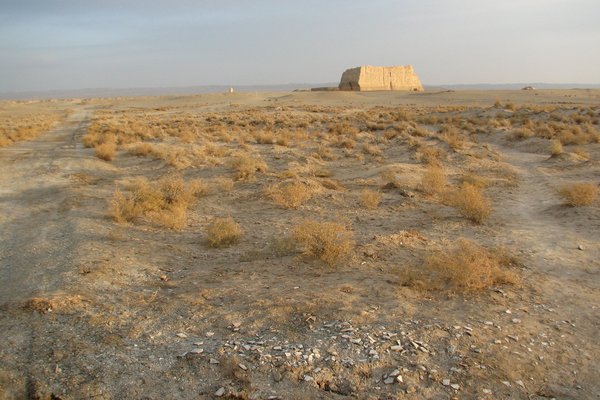China, Kazakhstan, Kyrgyzstan
Silk Roads: Chang'an-Tianshan Corridor
Silk Roads: the Routes Network of Chang'an-Tianshan Corridor comprises a heritage route of some 5,000 km linking Chang'an in central China with the heartland of Central Asia.
The network facilitated extensive cultural and economic exchange, resulting in the development of towns, forts, water management systems, caravanserai, and Buddhist and other religious buildings. It functioned between the 2nd century BCE and the 16th century CE.
Community Perspective: as a serial site with 35 locations spread across 3 countries, the main ‘problem’ is which one to choose. The easiest are in Xi’an, as well as the double-inscribed sites Longmen Grottoes and Mogao Caves. Alternative locations covered by reviewers are Yumen Pass, Burana, Talgar and Suyab - Ak Beshim, and Yar City.
Site Info
Official Information
- Full Name
- Silk Roads: the Routes Network of Chang'an-Tianshan Corridor (ID: 1442)
- Countries
- China Kazakhstan Kyrgyzstan
- Status
-
Inscribed 2014
Site history
History of Silk Roads: Chang'an-Tianshan Corridor
- 2014: Revision
- Includes the following former Chinese TWHS: The Remains of Chang'an City of the Han Dynasty, The Silk Road (Chinese Section), The Ruins of Daming Palace of the Tang Dynasty, The Ruins of Jiaohe Ancient City. And the former Kyrgyz TWHS: Burana-Minaret.
- 2014: Inscribed
- Inscribed
- 1994: Deferred
- As former TWHS The Ruins of Jiaohe Ancient City
- Type
- Cultural
- Criteria
- ii
- iii
- v
- vi
Links
- UNESCO
- whc.unesco.org
- Official
-
- silkroads.org.cn — Silk Roads World Heritage
- Related
-
- travelchinaguide.com — Travel China Guide Big Wild Goose Pagoda
All Links
UNESCO.org
- whc.unesco.org — whc.unesco.org/
Official Website
- silkroads.org.cn — Silk Roads World Heritage
Forum Discussion
- worldheritagesite.org — The Silk Road / Route
Related Resources
- travelchinaguide.com — Travel China Guide Big Wild Goose Pagoda
News Article
- May 8, 2025 globaltimes.cn — Millennium-old Silk Road heritage sites open to public for first time
- April 11, 2013 chinadaily.com.cn — Xingjiao Temple told to remove buildings
- Jan. 14, 2013 globaltimes.cn — China, Kazakhstan and Kyrgyzstan plan to submit Silk Road nomination for 2014
- June 10, 2009 english.people.com.cn — Silkroad - China backs joint bid to award World Cultural Heritage status
- April 10, 2009 news.xinhuanet.com — Silk Road to apply for World Heritage status in 2011
- June 3, 2008 news.xinhuanet.com — China and five Central Asia countries have submitted their first national lists of Silk Road treasures in a joint application for World Cultural Heritage status. China has nominated 48 sites, Kazakhstan 10, Kyrgyzstan seven, Tajikistan eight, Turkmenistan 57 and Uzbekistan 33
Community Information
- Community Category
- Human activity: Transport and Trade
Travel Information
Serial Transnational Sites
Exact locations inscribed twice (or more)
Luoyang Hotspot
Recent Connections
-
Yellow River Basin
Xi'an – on the south bank of the Wei ri… -
In Video Games
Civilizations VII: Weiyang Palace -
Extension Supported
"Recommends that the States Parties giv…
Connections of Silk Roads: Chang'an-Tianshan Corridor
- Individual People
-
-
Travels of Hyecho
"Hyecho was a monk who came to Tang from Xinluo (a state of North Korea) at his young age and later went on an oceanic route of pilgrimage to Sindhu from 723 to 727. He completed his work after he traveled east, central, south, west and north India and returned Chang'an, the capital of Tang Dynasty, via the Central Asia." - Nomination File -
Aurel Stein
For Mogao Caves -
Xuanzang
"Great Wild Goose Pagoda was built in the 8th century AD to preserve the sutras and Buddhist figurines brought from India by Xuanzang." - Nomination File
-
- Geography
-
-
Linear inscriptions
-
Yellow River Basin
Xi'an – on the south bank of the Wei river -
Disputed territories
Lies partly in the Uyghur AR
-
- Trivia
-
-
In Video Games
Civilizations VII: Weiyang Palace -
On Passports
Chinese passport: Xinjiang -> Silk Road -
Furthest distance apart
3636kms: Kostobe Kyrgyzstan (S06-KZ) N42 59 24 / E71 31 25 to Luoyang (C02-CN) N34 43 52 / E112 37 17 -
Minority communities
The Tomb of Mahmud Kashgari is a symbol of Uyghur nationalism
-
- History
-
-
Insurrections
Xuanwu Gate Incident in Daming Palace, Chang'an -
Oldest continuously inhabited cities
Xi'an, c. 1100 BC -
Silk Roads
Classic Land Route; "The Tian-shan corridor bears an exceptional witness to traditions of communication and exchange in economy and culture, and to social development across the Eurasian continent between the 2nd century BC to the 16th century AD." (OUV)
-
- Architecture
-
-
Square Kufic
At the minaret of Burana -
Earth Architecture
Jiahoe, Gaochang -
Cave Temples or Churches
Bin, Maijishan, Kizil and more -
Greco-Buddhist Art
Mogao Caves: "While Cave 285 is a “dharma center,” presenting a Buddhist message, the manner of that presentation is multi-cultural and the work of the Sogdians. The cave is special precisely because it combines motifs from Central China, the Southern Dynasties, Central Asia, India, Persia and even the Hellenistic world." (see link)
-
- Damaged
-
-
Destroyed or damaged by Earthquake
Burana Tower at Balasagun, "The last major earthquake in the 15th century destroyed the top half of the tower, reducing it to its current height of 25m" + Small Wild Goose Pagoda in Xi'an: 1556 Shaanxi earthquakeSee en.wikipedia.org
-
- World Heritage Process
-
-
Serial Transnational Sites
3 countries (China, Kazakhstan, Kyrgyzstan) -
Already inscribed still on T List
Chinese Section of the Silk Road: Land routes in Henan Province, Shaanxi Province, Gansu Province, Qinghai Province, Ningxia Hui Autonomous Region, and Xinjiang Uygur Autonomous Region; Sea Routes in Ningbo City, Zhejiang Province and Quanzhou City, Fujian Province - from Western-Han Dynasty to Qing Dynasty -
Extensions on Tentative List
Silk Roads Sites in Kyrgyzstan (2010), only partly inscribed -
Derived from more than one TWHS
Includes the following former Chinese TWHS: The Remains of Chang'an City of the Han Dynasty, The Silk Road (Chinese Section), The Ruins of Daming Palace of the Tang Dynasty, The Ruins of Jiaohe Ancient City -
Reduced from broader TWHS
Only a part of the Kyrgyz section of the transnational nomination was inscribed. The inscribed as well as uninscribed sections still appear as TWHS, probably as an extension. -
Exact locations inscribed twice (or more)
Includes the already inscribed Longmen and Mogao Grottoes plus a stretch of the Great Wall near Yumen Pass -
Extension Supported
"Recommends that the States Parties give consideration to the following: Undertaking further studies of sites that reflect the many planned way stations and watch towers and consider how they might be added to the series in the future; Considering extending boundaries of sites to include the sophisticated arrangements for water management that underpinned many of the settlements and their agriculture along the Silk Roads" (Decision 38 COM 8B.24)
-
- Religion and Belief
-
-
Religious Relics
The relics of Xuanzang are preserved at Xingjiao Temple -
Buddhist sites in non-Buddhist countries
Kazakhstan and Kyrgyzstan -
Manichaeism
remains of a Manichean church at Kayalyk (AB ev), Gaochang: its inhabitants practised Manicheism -
Legends and Folk Myths
Burana Tower at Balasagun, "A legend connected with the tower says that a witch warned a local king that his newly-born daughter would die once she reached the age of eighteen. To protect her, he built a tall tower where he sequestered his daughter. No one entered the tower, except the daughter's servant who brought her food. The daughter grew up alone and became a beautiful young lady. One day, however, a poisonous spider was hiding in the food brought by the servant. The spider bit the girl, and she died in the tower, at the age of eighteen."See en.wikipedia.org
-
Notable mosques
Burana Tower at Balasagun, only the large minaret still standingSee en.wikipedia.org
-
Syriac Churches
Nestorian church in Suyab; evidence of a Nestorian church in Gaochang -
Introduction of Buddhism
Criterion vi "The Tian-shan Corridor is directly associated with Zhang Qian's diplomatic mission to the Western Regions, a milestone event in the history of human civilization and cultural interchange in the Eurasian Continent. It also reflects in a profound way the tangible impact of Buddhism into ancient China which had significant impact on cultures of East Asia." (OUV) - including Kizil Cave-Temple Complex "Kizil Cave-temple is influenced by multiple Buddhism arts from India, central Asia and northern Central Plains. It is both the model of Buddhist cave-temple in central Asia, and the intermedium between cave-temples in Indian and Northern Central Plains. It has a unique shape of cave and a distinctive style of murals, which reveals the track of how Buddhism introduced from the west regions to the east." (nom file) -
Zoroastrianism
the co-existence of many religions (as well as many ethnic groups) along the corridor including Zoroastrianism, the main religion of the Sogdians of Zhetysu region (AB ev)
-
- Human Activity
-
-
Cultural Routes
-
Petrosomatoglyphs
Dingding Gate in Luoyang: "In the 2007 excavation, significant artefacts relating to the Silk Road were found, including rutted wheel tracks, human footprints and camel hoof prints."See www.mdpi.com
-
Irrigation and drainage
At Balasagun (Burana) and other Central Asian locations: "Several had complex water gathering and irrigation systems with ceramic pipes and reservoirs." (AB ev)
-
- Constructions
-
-
Ossuary
Ceramic chest found at Burana -
Cemeteries
Suyab -
Giant Buddha statues
Bingling Temple - the giant Maitreya Buddha that stands more than 27 meters, or almost 100 feet, tall (wiki) -
Mausolea
At BalasagunSee en.wikipedia.org
-
Protective Shelters
Danfeng Gate Xian - the new "reconstructed" gate is in fact a protective shelter suspended over the archaeological remains which are visible inside the "new" gate. The Nomination file only shows photos of the site before the reconstruction and states "After excavation, Danfeng Gate is protectively covered by shelter, and opened for exhibition. The covering shelter was built with an architectural and artistic attempt to imitate a Tang Dynasty style." SeeSee www.iicc.org.cn
-
Frontier walls
Part of Great Wall included -
Caravanserai
At Akyrtas (AB ev) -
Tombs
Tomb of Mahmus Kashgari
-
- WHS on Other Lists
- Timeline
-
-
Built in the 2nd century BC
"Having witnessed significant stages in the development of human civilization on the Eurasian continent over a period of eighteen centuries between the 2nd century BC and 16th century AD," etc (nom file)
-
- WHS Hotspots
-
-
Luoyang Hotspot
Luoyang City and Longmen Grottoes locations
-
- Science and Technology
-
-
Cultural property cloning
Kizil Cave Temple "Kizil wall paintings in the Sailor’s cavern in Xinjiang Uyghur territory, which are considered to be the most beautiful among all Kizil paintings."
-
News
- globaltimes.cn 05/08/2025
- Millennium-old Silk Road heritage…
- chinadaily.com.cn 04/11/2013
- Xingjiao Temple told to remove bui…
- globaltimes.cn 01/14/2013
- China, Kazakhstan and Kyrgyzstan p…
Recent Visitors
Visitors of Silk Roads: Chang'an-Tianshan Corridor
- Adrian
- Adrian Turtschi
- Afshin Iranpour
- Alejandro Lau
- Alexander Barabanov
- Alexander Parsons
- Alex Goh
- Alex Marcean
- Ali Zingstra
- A. Mehmet Haksever
- Ammon Watkins
- Ana
- Ana Lozano
- Ansitong
- Antonio J.
- Artur Anuszewski
- Ask Gudmundsen
- Aspasia
- Atila Ege
- BaziFettehenne
- Bill Koo
- Bill Maurmann
- Bin
- Boj
- Bram de Bruin
- Carl Le Boeuf
- Carlo Sarion
- Chalamphol Therakul
- Chantal den Haan
- chenboada
- chenqtao
- Cheryl
- chiuliqi
- christof
- Christoph
- Christravelblog
- Chunsian01
- Cirene Moraes
- Claire Bradshaw
- Clyde
- CugelVance
- cwthong
- CynthiaSam
- czesioszpachelka
- Danieljbromberg
- David Marton
- Deffra
- del
- Dennis Nicklaus
- Dimitar Krastev
- dmux7
- Dolemite92
- Dorejd
- Dwight Zehuan Xiao
- Elisabeth Fransisca Situmorang
- Els Slots
- Erik Jelinek
- Eva Kisgyorgy
- Fan Yibo
- Federico P.
- Feldhase
- Fernweh
- FK
- Fmaiolo@yahoo.com
- Frederik Dawson
- Gary Arndt
- George Gdanski
- GeorgeIng61
- Gernot
- Hadrianus
- HaraldOest
- Harald T.
- Harry Mitsidis
- Helios
- henryjiao18
- heywhatever2
- Ingrid
- Ivan Rucek
- Jacob Choi
- Jakubmarin
- Jarek Pokrzywnicki
- Javier Coro
- Jawnbeary
- jballard650
- Jean Lecaillon
- Jeffrey Chai
- Jennjenn
- Jens
- JobStopar
- Joel on the Road
- jonas
- Jonas Kremer
- jonathanfr
- JoStof
- Joyce van Soest
- Juha Sjoeblom
- jxrocky
- KarenBMoore
- Kasper
- Ken DJ
- Kevin McFarland
- Kevin Padley-Knight
- KngAlaric
- Knut
- Kristin
- Krzysztof B
- Kyle Magnuson
- Lado Joel
- Lameduck99
- Laurine
- lichia
- Loic Pedras
- Lucio
- Ludvan
- Luis Filipe Gaspar
- Luke LOU
- lynnz317@aol.com
- Maciej Gil
- Maciej Gowin
- Maja
- Malgorzata Kopczynska
- marcel staron
- Marcobrey
- Martin
- Martina Rúčková
- Mathijs
- Matthewrw
- MatusBeber
- MaYumin
- MC
- Michael Novins
- Michael Turtle
- Mihai Dascalu
- Mikko
- Miloš Tašković
- MMM
- Mo-han Je
- Monica Tasciotti
- Morodhi
- Naim Y
- nan
- Nihal Ege
- Palimpsesto
- Patrik
- Pchxiao
- Petteri
- Philipp Leu
- phillipmeng
- Pieter Dijkshoorn
- Pink Bunny
- ReallyDeepThoughts
- Reza
- Rick Ohm
- rivr
- Rob Wilson
- Roman Bruehwiler
- Samy G
- Sergio Arjona
- Shandos Cleaver
- Shannon O'Donnell
- Shijie ZHU
- shwabb1
- Sijia
- Simonf
- Slavi
- SnakeGreen
- Solivagant
- Ssong.x
- Stanislaw Warwas
- StaziG
- SymonMajewski
- Szucs Tamas
- Taotao Chen
- Tarquinio_Superbo
- Tcchang0825
- Thomas Buechler
- Thomas van der Walt
- Tim Allen
- Timonator
- Timothy C Easton
- tingmelvin
- Tingying He
- tony0001
- Tony H.
- Toxicologist
- trekkie900
- Twobaconsandaboston
- Valentina
- Vanessa Buechler
- Vincent Cheung
- V&M
- voyager
- Walter
- wantrain.
- Westwards
- Wojciech Fedoruk
- Wo_ko
- Xander Huang
- Xiquinho Silva
- Yang Chengyu
- Yevhen Ivanovych
- Yongcheng Liu
- Zhou Yan
- Zoë Sheng
- Zos M
- ZZSong
Community Reviews
Show full reviews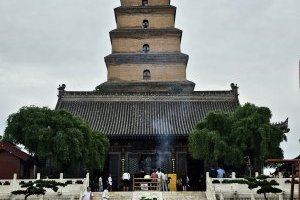
Visited in June 2024. For such a grand serial site, the Silk Road, it's a shame that I only had time to visit one component of it in Xi'an: the Giant Wild Goose Pagoda. The Giant Wild Goose Pagoda lives up to its name. It's giant (but doesn't look like a goose) and rises above of all the modern stuff that has been built around it. When you arrive to the district where the pagoda is located you wouldn't believe first that there is a very historical monument somewhere nearby. The district is more like an open-air shopping mall with all the international brands you can think of. But in the middle of it all rises the ancient pagoda, still looking magnificent and mystical despite all the modern entertainment around it.
With small entry fee you can enter the Daci'en Temple area around the pagoda and visiting inside the pagoda is with extra fee. We didn't pay the entry for the pagoda as we were in a rush to catch our train but wanted to see this site before departing Xi'an. The Giant Wild Goose Pagoda was built in around 648 – 649 during the Tang dynasty and is famous for holding Buddhist sutras and statues that were brought from India. The visit is worthwhile even if you just stroll around the Daci'en Temple area without going inside the pagoda. The temple is very busy with people praying and taking photos. I thought the temple buildings were beautiful and …
Keep reading 0 comments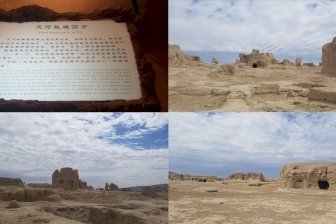
While the Silk roads are of very important cultural significant I find the areas included not always of high value. Most people will auto-tick this with a visit of Xi'an, a magnificent city and well worth a 3 day trip, or some WHS enthusiasts will tick this off by going to Luoyang to visit the grottoes. While I've also done both there are many reviews about them already and as it's been over 4 years since the last review I thought I can focus on a less visited part of the Chinese section.
A visit to Turpan, Xinjiang (well, if you want to call it China is debatable but I'm not political) gives you several highlights of the area to fill a good 3 day trip. There are the Karez Wells, the hot 70 degree Celcius desert, Grape Valley, and there is a the silk road. There are two spots actually, but only Yar City is an easy reach by taxi without leaving the city limits. There are no police checks but there is no public bus, and taxi apps aren't used until further notice. It's best to get contacts from a driver who either waits or you can ask the reception or security guards to call you a taxi. Sometimes they will also show up randomly.
The entrance cost is typically steep for China's sites and you don't even get a proper museum. There are a few halls about the history and then you need to take …
Keep reading 0 commentsJarek Pokrzywnicki
Silk Roads: Chang'an-Tianshan Corridor
Silk Roads: Chang'an-Tianshan Corridor (Inscribed)
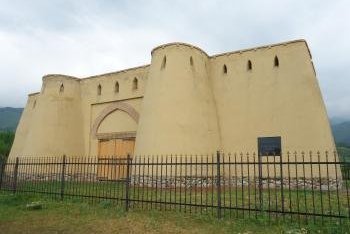
As some others were described I will focus on less popular: Talgar (Kazakhstan) and Suyab - Ak Beshim (Kyrgyzstan), both visited in July, 2017.
Talgar can be easily visited from Almaty town as a half-day trip. There is a convenient public bus from Sayakhat Bus Terminal (Avtovokzal Sayakhat) that goes directly to Talgar town (last bus stop). From town center there are around 3 km to the archeological excavations. From bus station cross the bridge and take the first main street to the right and follow the main road up the river. The place should be at the end of the street. Mind that there are no road-signs but at least local people know it and can direct you provided you know some Russian.
In fact coordinates on our website are wrong as they show a place in the city center. Good coordinates are 43°16'47.1"N 77°13'19.0"E as they should show the the place called on Google Maps “Талгарское Городище” (Talgar Borough). Archeological remains covers relatively huge area although there is not much left apart from the reconstructed town gate (on the photo). There area is currently utilized as grazing ground for sheep, horses and cattle. Reconstructed town gate is interesting but during my visit it was closed (no information about opening hours).
Suyab (Ak-Beshim) can be easily visited together with Burana as it is located some 12 km from the site. Moreover I was surprised that taxi drivers knows the place (and the way how to get). …
Keep reading 0 commentsGary Arndt
Silk Roads: Chang'an-Tianshan Corridor
Silk Roads: Chang'an-Tianshan Corridor (Inscribed)
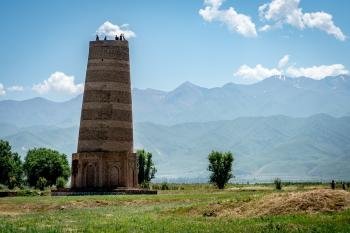
I visited the Burana Tower which is approximately 70km from the capital of Kyrgyzstan, Bishkek.
The Burana Tower was a stop on the silk road and served as both a minaret and an inland lighthouse for caravans.
The site is very easy to visit and is right outside the town of Tokmok. Any taxi in town should be able to take you there. There is a small entry fee.
In addition to the tower, there is a small cemetery with headstones with engraved images of the person who is buried.
Read more about my trip to: Silk Roads: the Routes Network of Chang’an-Tianshan Corridor
Keep reading 0 commentsFrederik Dawson
Silk Roads: Chang'an-Tianshan Corridor
Silk Roads: Chang'an-Tianshan Corridor (Inscribed)
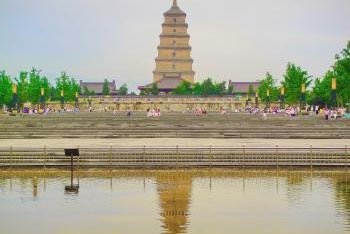
There is something mysterious about “Silk Roads” as there are few comparable sites that can capture an adventurous heart like Silk Roads can. With the reminiscences of ancient trading caravans, exotic arts and cultures, unfamiliar architecture of faraway land in the different side of the world, stories of Marco Polo and Xuanzang, or even the classical fantasy of Journey to the West, making Silk Roads not just a World Heritage Site but as the ideal representative of global cultural exchange that should be celebrated. Since the route networks differ throughout the long history and their different roles in each regional development, I am fine with the corridor approach. Among many ancient sites I have seen along the routes in Xi’an – Luoyang which were the capitals of China from Han to Tang Dynasties, only six places have been chosen by Chinese authority, Longmen Grottoes and Dingding Gate near Luoyang, Hangu Pass in Sanmenxia, and Xi’an’s Big and Small Wild Goose Pagodas and Weiyang Palace.
For Luoyang, actually I expected that the famous White Horse Temple will be one of the selections, but thinking again that the temple actually is not quite authentic after Red Guard vandalism and the new development like Thai and Indian temples. The Han and Northern Wei ruins near the temple were not open for public yet during my visit, so I only focused on Tang and Sui part and the famous Longmen Grottoes. The Tang and Sui ruins are under the modern city of Luoyang, …
Keep reading 0 comments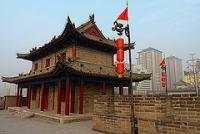
I visited Xi'an in November 2013. My main objective was to visit the Terracotta Warriors sites. Knowing however that the ancient silk road actually begins at Chang'an (now Xian), I allowed a full day to visit the old city with its Big and Small Wild Goose Pagodas, the City Walls, the Bell Tower, the Drum Tower, etc. I enjoyed my time in Xi'an and would have loved to spend another night there. I hope that one day I'll be able to visit some other sites (in Kazakhistan for example) to be able to see the similarities or differences from the sites inscribed in China.
Keep reading 0 commentsSolivagant
Silk Roads: Chang'an-Tianshan Corridor
Silk Roads: Chang'an-Tianshan Corridor (Inscribed)
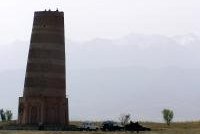
Perusing the list of 33 sites included in this nomination one starts in the East with reasonably well known ones in Xian – the Wild Goose Pagodas and then on through 2 existing WHS at Longmen and Mogao and finally into the Tienshan area itself after which this part of the Silk Route has been named. And there is one in this group which I recognised – Burana in Kyrgyzstan!
We visited this site back in 2004. It is situated around 70kms east of the capital Bishkek on the road to Lake Issyk Kul. Now. Kyrgyzstan is a place to visit primarily for its mountains and (at least in those days) the remains of its nomadic traditions – one highlight of our visit was to hear a Manaschi chanting the world’s longest epic poem (not the whole thing luckily as it extends to half a million lines!). Major historical sites are not the country’s strong point. Burana was a “stop off” visit therefore as much to break the morning’s drive to Issyk Kul as to see anything “remarkable”.
And, in all honesty, what is on show isn’t that great – the stubby remains of a once much taller minaret now called the “Burana Tower” set against an attractive mountain background (photo). Constructed in brick, it has been heavily restored even at its reduced height. I was interested to note that the AB evaluation states “Minor repairs on the minaret at Burana were carried out in the 1970s using cement. The …
Keep reading 0 comments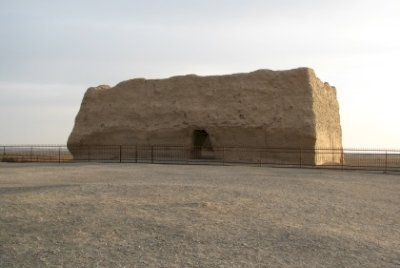
During my Grand Tour of China in 2007, I visited two stretches of this Silk Road nomination. In Xi'an, where there's a lot to see anyway, I saw the two Wild Goose Pagoda's. According to my notes, I found the Small one "rustic" and the Great one a bit tacky as it is located inside an amusement park. Both sites are well on the beaten track in Xi'an (maybe the city's best-known sites next to the Terracotta Warriors), but I can't say it was a very memorable visit.
Much more interesting was my detour to Gansu Province, in the far northwest of China. After Dunhuang with its Mogao Caves, I rented a taxi for a day and the guy drove me around to all kinds of interesting places. Far, far out in the desert lie the remains of the Yumen Pass. It was very cold (November!), and there were no other people around. Normally you would have to pay an entrance fee, but we were either too early in the day or too late in the season. The Yumen Pass was a former border post of the Han Empire. There's only one bulky structure left. As the temperature was around the freezing point, I just sprinted there to take some pictures and go back quickly to the warmth of the car.
Between Dunhuang and the Yumen Pass lie several other Silk Road-related structures: some are inscribed and others not. A few original Great Wall remains and the ruins …
Keep reading 0 comments
